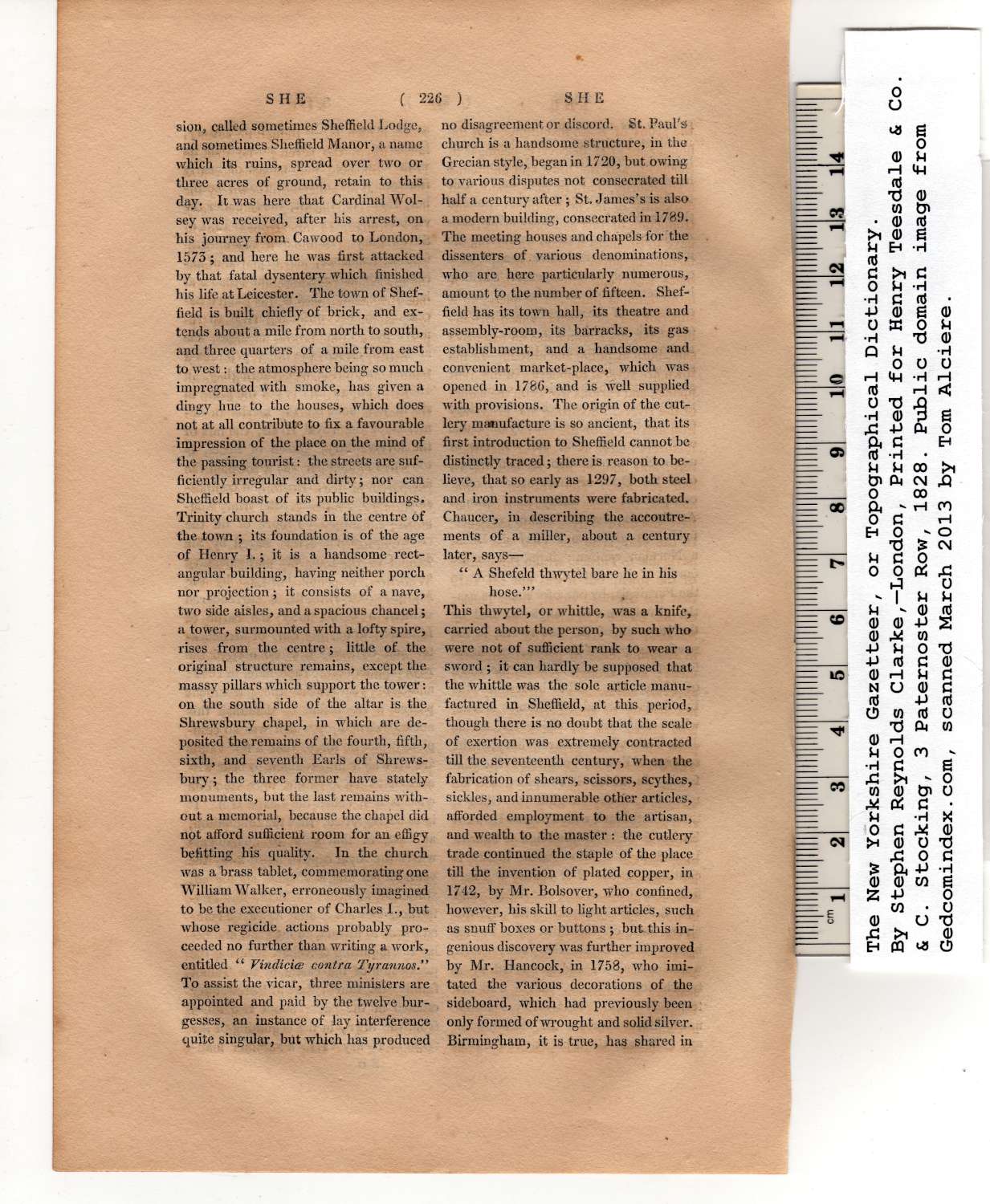|
sion, called sometimes Sheffield Lodge,
and sometimes Sheffield Manor, a name
which its ruins, spread over two or
three acres of ground, retain to this
day. It was here that Cardinal Wol-
sey was received, after his arrest, on
his journey from Cawood to London,
1573; and here he was first attacked
by that fatal dysentery which finished
his life at Leicester. The town of Shef-
field is built chiefly of brick, and ex-
tends about a mile from north to south,
and three quarters of a mile from east
to west: the atmosphere being so much
impregnated with smoke, has given a
dingy hue to the houses, which does
not at all contribute to fix a favourable
impression of the place on the mind of
the passing tourist: the streets are suf-
ficiently irregular and dirty; nor can
Sheffield boast of its public buildings.
Trinity church stands in the centre of
the town ; its foundation is of the age
of Henry I.; it is a handsome rect-
angular building, having neither porch
nor projection; it consists of a nave,
two side aisles, and a spacious chancel;
a tower, surmounted with a lofty spire,
rises from the centre; little of the
original structure remains, except the
massy pillars which support the tower:
on the south side of the altar is the
Shrewsbury chapel, in which are de-
posited the remains of the fourth, fifth,
sixth, and seventh Earls of Shrews-
bury; the three former have stately
monuments, but the last remains with-
out a memorial, because the chapel did
not afford sufficient room for an effigy
befitting his quality. In the church
was a brass tablet, commemorating one
William Walker, erroneously imagined
to be the executioner of Charles I., but
whose regicide actions probably pro-
ceeded no further than writing a work,
entitled “ Vindicice contra Tyrannos.”
To assist the vicar, three ministers are
appointed and paid by the twelve bur-
gesses, an instance of lay interference
quite singular, bdt which has produced
no disagreement or discord. St. Paul's
church is a handsome structure, in the
Grecian style, began in 1720, hut owing
to various disputes not consecrated till
half a century after; St. James’s is also
a modern building, consecrated in 1789.
The meeting houses and chapels for the
dissenters of various denominations,
who are here particularly numerous,
amount to the number of fifteen. Shef-
field has its town hall, its theatre and
assembly-room, its barracks, its gas
establishment, and a handsome and
convenient market-place, which was
opened in 1786, and is well supplied
with provisions. The origin of the cut-
lery manufacture is so ancient, that its
first introduction to Sheffield cannot be
distinctly traced; there is reason to be-
lieve, that so early as 1297, both steel
and iron instruments were fabricated.
Chaucer, in describing the accoutre-
ments of a miller, about a century
later, says— |
“ A Shefeld thwytel bare he in his
hose.’”
This thwytel, or whittle, was a knife,
carried about the person, by such who
were not of sufficient rank to wear a
sword ; it can hardly be supposed that
the whittle was the sole article manu-
factured in Sheffield, at this period,
though there is no doubt that the scale
of exertion was extremely contracted
till the seventeenth century, when the
fabrication of shears, scissors, scythes,
sickles, and innumerable other articles,
afforded employment to the artisan,
and wealth to the master : the cutlery
trade continued the staple of the place
till the invention of plated copper, in
1742, by Mr. Bolsover, who confined,
however, his skill to light articles, such
as snuff boxes or buttons ; hut this in-
genious discovery was further improved
by Mr. Hancock, in 1758, who imi-
tated the various decorations of the
sideboard, which had previously been
only formed of wrought and solid silver.
Birmingham, it is true, has shared in |
